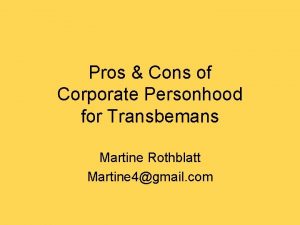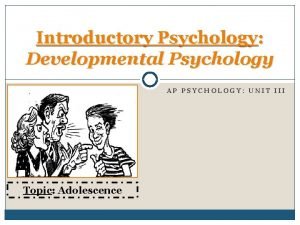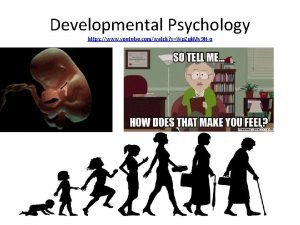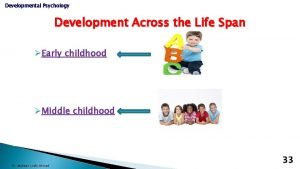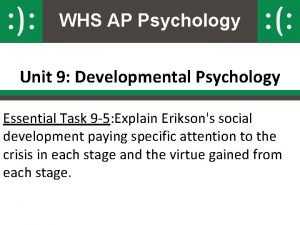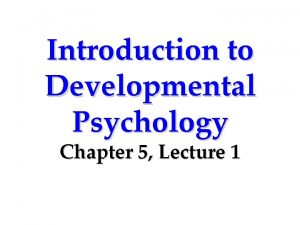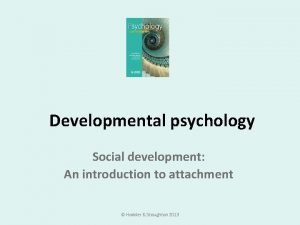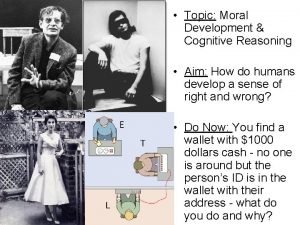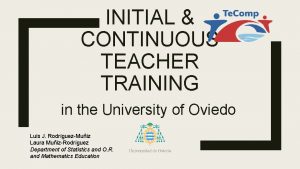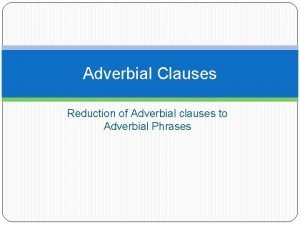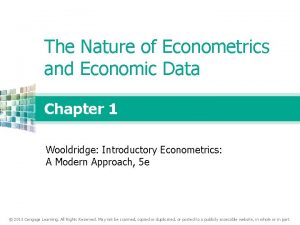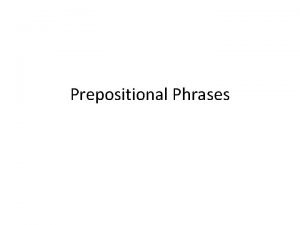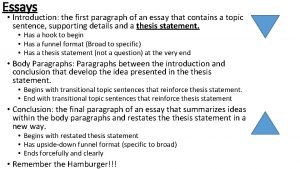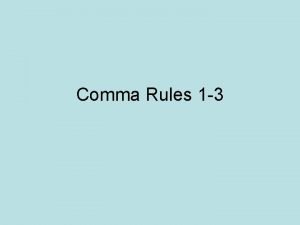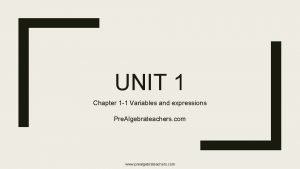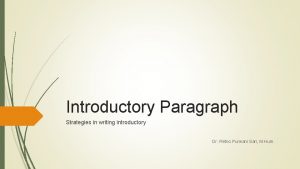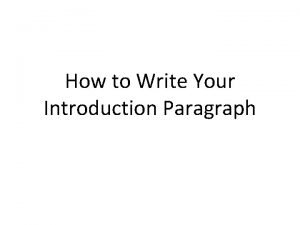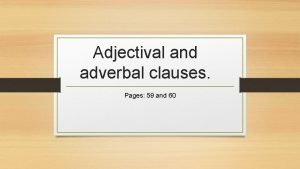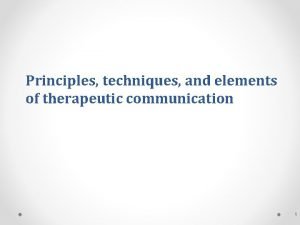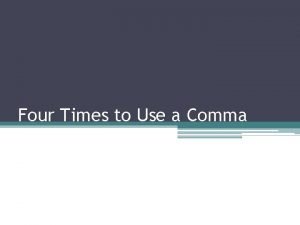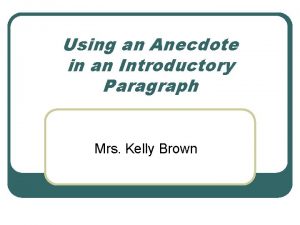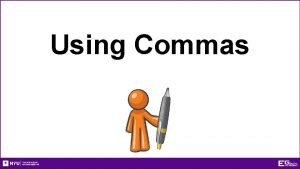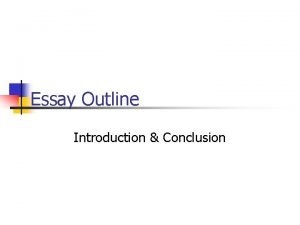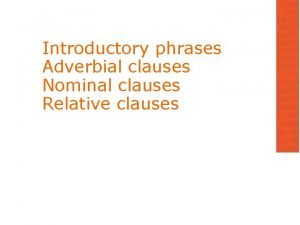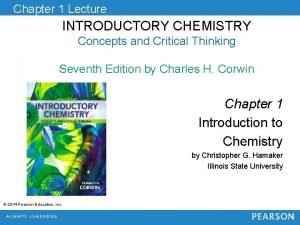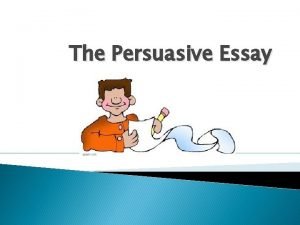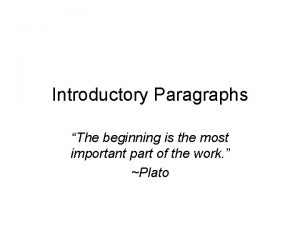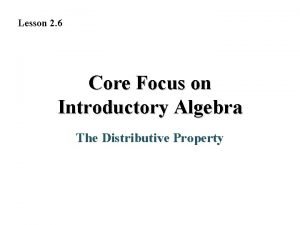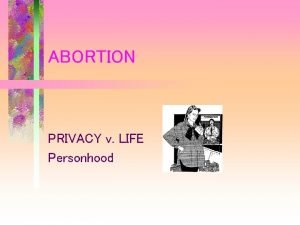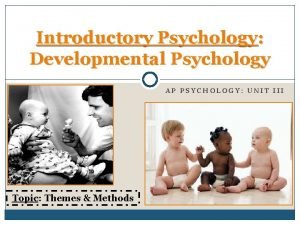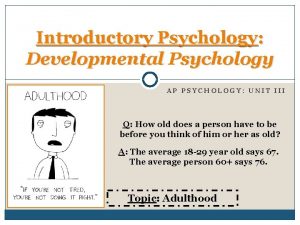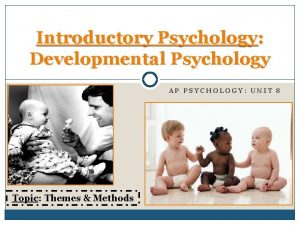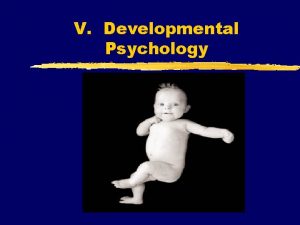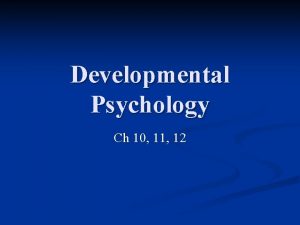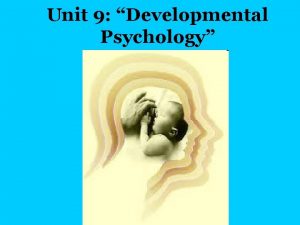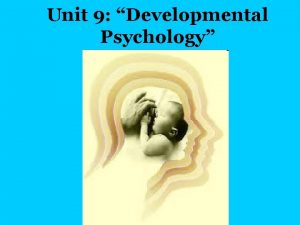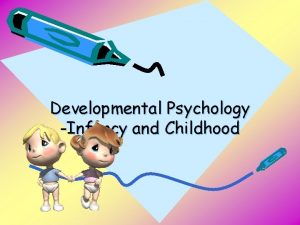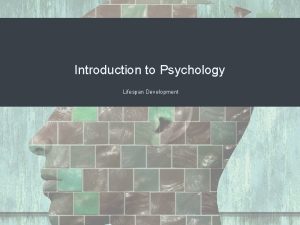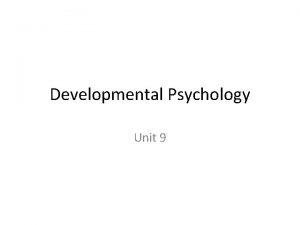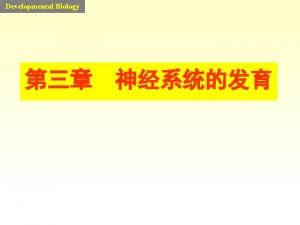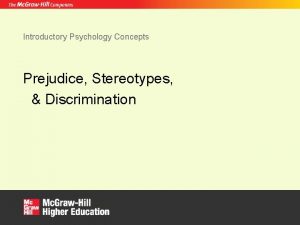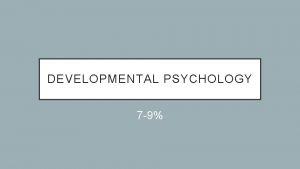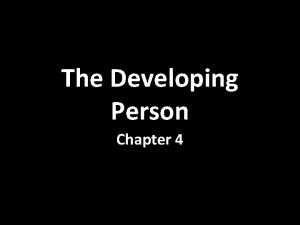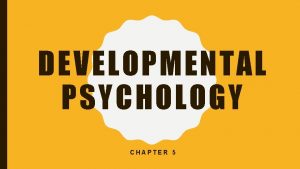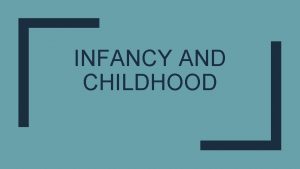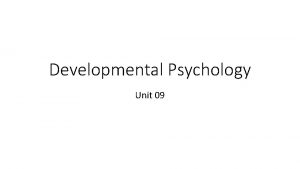Introductory Psychology Developmental Psychology From egghood to personhood



















































- Slides: 51

Introductory Psychology: Developmental Psychology “From egghood to personhood…” AP PSYCHOLOGY: UNIT III Stage Span Infancy Newborn to toddler Childhood Toddler to teenager Topic: Infancy & Childhood

Infancy & Childhood: Physical Development PART ONE

Physical: Brain Development During prenatal development, the brain produces 250, 000 neurons/minute Peak: 28 billion neurons at 7 months (prenatal) By birth, this number has been pruned to 23 billion By the end of the first year, the brain is about 35% larger than it was at birth


Physical: Brain Development Brain development unfolds according to genetic instructions, causing various bodily and mental functions to occur in sequence Maturation The orderly sequence of biological growth processes Relatively uninfluenced by experience EXAMPLE Memory not solidified until after 3 rd birthday; known as “infantile amnesia”

Physical: Motor Development Cephalocaudal Development The head develops before the arms & trunk The arms & trunk develop before the legs Proximodistal Development The head, trunk and arms develop before the hands & fingers ***Applies to both prenatal development AND development during the first two years

Physical: Motor Development Motor Milestones Raising head & chest (2 -4 months) Rolling over (2 -5 months) Sitting up with support (4 -6 months) Sitting up without support (6 -7 months) Crawling (7 -8 months) Walking (8 -18 months)

Infancy & Childhood: Cognitive Development PART TWO

Cognitive Development Cognition All mental activities associated with thinking, knowing, remembering and communicating Jean Piaget (1896 -1980) Piaget DID NOT believe that a child’s mind was a mini-adult mind Believed that cognitive development is shaped by errors; a struggle to make sense of our experiences as children

Cognitive Development Schemas A concept or framework that organizes & interprets information Mental molds into which we pour experiences so that the maturing brain can continually build upon concepts Example If Bob points to a picture of an apple and tells his child, “that’s an apple, ” the child forms a schema for “apple” that looks something like the picture

Cognitive Development Assimilation Interpreting a new experience in terms of an existing schema Example Bob’s child might see an orange & say “apple” because both objects are round Accommodation The process of adjusting/modifying a schema Example When Bob corrects his child, the child might alter the schema for apple to include “round” and “red”


Cognitive Development

Piaget: (1) Sensorimotor Stage Birth to 2 years Description of Stage The use of senses & motor abilities to learn about the world/ interact with objects in the environment Developmental Phenomena Object Permanence (unfolds gradually) The awareness that objects continue to exist when not perceived Critical step in developing language & abstract thought Stranger Anxiety Separation Anxiety

Piaget: (1) Sensorimotor Stage

Piaget: (1) Sensorimotor Stage Stag Criticisms of Stage Piaget believed that children in the sensorimotor stage are incapable of thinking – no abstract concepts or ideas Recent research suggests that children in the sensorimotor stage can both think and count Babies can… Understand basic laws of physics “Count” (Karen Wynn)

Piaget: (1) Sensorimotor Stage

Piaget: (2) Preoperational Stage 2 to 7 years Description of Stage Children learn to use language as a means of exploring the world; however, they are not yet capable of logical thought Too young to perform mental operations; lack conservation Developmental Phenomena Pretend Play Animism Egocentrism Centration Irreversibility

Piaget: (2) Preoperational Stage

Piaget: (2) Preoperational Stage Egocentrism Example “John, do you have a brother? ” “Yes. ” “What’s his name? ” “Jim. ” “Does Jim have a brother? ” “No. ”

Piaget: (2) Preoperational Stage Theory of Mind 4 to 5 years People’s ideas about their own and others’ mental states – about their feelings, perceptions, and thoughts, and the behaviors these might predict Seek to understand… Why their playmate is angry… Why their sibling will share… Why their parent would buy a toy…

Theory of Mind Test… A child without theory of mind, would assume that Sally… A child with theory of mind, would assume that Sally…

Piaget: (2) Preoperational Stage Criticisms of Stage Judy De. Loache (1987) found that children as young as 3 are able to use mental operations & think symbolically When shown a model of a dog’s hiding place, a 2 ½-yearold could not locate the stuffed dog in an actual room, but a three year old could…

Piaget: (3) Concrete Operational Stage 7 to 11 years Description of Stage Children become capable of logical thought processes; physical, concrete, touchable reality; lack abstract thinking Developmental Phenomena Conservation Reversible thinking Mathematical transformation Developmental Limitations Abstract thinking Freedom, peace, love, etc.

Piaget: (4) Formal Operational Stage 12 years to adulthood Description of Stage The adolescent becomes capable of abstract thinking Developmental Phenomena Abstract logic Hypothetical thinking “If women were in charge of countries, would there be fewer wars? Potential for mature moral reasoning

Reflecting on Piaget’s Theory Globally influential; however, today’s researchers believe the following… Development is a continuous process Children express their mental abilities & operations at an earlier age Formal logic is a smaller part of cognition

Vygotsky: Sociocultural Theory Lev Vygotsky (1896 -1934) Stressed the importance of social interactions with other people, especially highly skilled children or adults, in the child’s cognitive development

Vygotsky: Sociocultural Theory Scaffolding Process in which a more skilled learner gives help to a less skilled learner, reducing the amount of help as the less skilled learner becomes more capable Zone of Proximal Development (ZPD) The difference between what a child can do alone and what the child can do with the help of a teacher

Vygotsky: Sociocultural Theory Example If Jenny can do math problems at a 4 th grade level on her own, but can work up to a 6 th grade level with the help of a teacher, her ZPD is two years If Suzy can do math problems at a 4 th grade level on her own, but can work up to a 5 th grade level with the help of a teacher, her ZPD is one year – not as great as Jenny’s


Language Development Cooing 2 months of age; begin to make vowel-like sounds Babbling 6 months of age; add consonant sounds to vowels Holographic Speech 1 year; “Milk!” or “Ball!” Telegraphic Speech 1 ½ to 2 years; short, simple sentences; “Baby eat” or “Mommy go” or “Where ball? ” or “Doggie go bye-bye” Whole Sentences Preschool years

Infancy & Childhood: Psychosocial Development PART THREE

Psychosocial: Temperament The behavioral and emotional characteristics that are fairly well-established at birth Alexander Thomas & Stella Chess (1986) “Easy” Babies Regular, good-natured, easy to care for, adaptable “Difficult” Babies Irregular, moody & loud, react negatively to new situations “Slow-to-Warm-Up” Babies Quieter, slow to respond to new situations

Psychosocial: Temperament Psychologist, Jerome Kagan has added a fourth temperament “Shy” Child Timid and inhibited; fearful of anything new or strange Longitudinal research (Kagan, 1998) strongly suggests that these temperament styles last well into adulthood, although there is the potential for environmental influence “Goodness of fit”

Psychosocial: Attachment The emotional bond between an infant and the primary caregiver Demonstrated by a child’s “closeness-seeking” and distress upon separation Develops within the first six months of life

Psychosocial: Attachment through contact Humans form a bond with those who care for them in infancy; based upon interaction with caregiver Harry Harlow Role of physical contact, or “contact comfort” in attachment


Psychosocial: Attachment throughout familiarity Occurs in many species of animals during a critical period Konrad Lorenz Imprinting The tendency to follow the first moving object seen as the basis for attachment


Psychosocial: Attachment Mary Ainsworth The “Stranger Situation” Identified 4 distinct styles of attachment Secure Avoidant Ambivalent Disorganized-Disoriented

Ainsworth: (1) Secure Attachment Characteristics Very willing to explore Frequently “touched base” Wary of strangers, but calm as long as the mother was nearby When the mother left, the infant was noticeably upset; however, he or she was easily soothed upon her return *** Generally corresponds to secure attachment in adulthood ***

Ainsworth: (2) Avoidant Attachment Characteristics Only somewhat willing to explore Did not “touch base” Did not look at strangers Reacted very little to mother’s absence or to her return **Generally corresponds to dismissive attachment in adulthood

Ainsworth: (3) Ambivalent Attachment Characteristics Unwilling to explore; clingy Very upset by strangers regardless of mother’s presence Very upset by mother’s departure; not easily soothed Mixed reaction to mother’s return ***Generally corresponds to preoccupied attachment in adulthood ***

Ainsworth: (4) Disorganized Attachment Characteristics Subsequent studies by Mary Main & Erik Hesse (1990) Sometimes referred to as Disorganized-Disoriented Attachment Generally fearful with dazed and depressed expression Unable to decide how they should react to their mother’s return; little to no eye contact

Psychosocial: Attachment Deprivation of Attachment Impact of denying monkeys physical comfort from their mother? Cases of “Genie” and “Victor” Daycare?



Psychosocial: Attachment Erikson Concept of “Basic Trust” Securely attached children tend to believe that the world is predictable and trustworthy Erikson attributed attachment & basic trust to parenting Identified eight stages of psychosocial development; first four occur during childhood; each contains a developmental “crisis” Trust versus Mistrust (Birth– 1 year) Autonomy versus Shame & Doubt (1– 3 years old) Initiative versus Guilt (3– 5 years old) Industry versus Inferiority (5– 12 years old)

Psychosocial: Parenting Styles Diana Baumrind’s THREE PRIMARY Styles Authoritarian Demanding; not responsive Impose rules and expect obedience Permissive Not demanding, but responsive Use little punishment Authoritative Demanding and responsive Exert control by establishing/enforcing rules, but they also explain the reasons for the rules

Psychosocial: Self-Concept Understanding of who we are Just as infants can achieve attachment, children must achieve a positive self concept; develops gradually in the first year “Mirror Test” By 18 months, children know THEY are the image in the mirror Children with a positive self-concept are more confident, assertive, optimistic and socialable…how is this achieved?

Relationships with Other Children Solitary Play Children first play by themselves Parallel Play As they get older, children play side-by-side with other children, but do not interact Cooperative Play By about 3 1/2, children begin playing with others Peer Group A network of same-aged friends and acquaintances who give one another emotional & social support
 Social criterion of personhood
Social criterion of personhood Intercultural personhood definition
Intercultural personhood definition Corporate personhood pros and cons
Corporate personhood pros and cons Developmental psychology
Developmental psychology Developmental psychology youtube
Developmental psychology youtube Research methods in developmental psychology
Research methods in developmental psychology Devonte is a graduate student in developmental psychology
Devonte is a graduate student in developmental psychology Developmental psychology
Developmental psychology History of developmental ideas in psychology
History of developmental ideas in psychology Unit 3 developmental psychology
Unit 3 developmental psychology Initiative vs guilt
Initiative vs guilt Chapter 5 developmental psychology
Chapter 5 developmental psychology Attachment theory in psychology
Attachment theory in psychology Ucf online psychology degree
Ucf online psychology degree Lawrence kohlberg developmental psychology
Lawrence kohlberg developmental psychology Introductory chemistry 4th edition
Introductory chemistry 4th edition Introductory maxqda course
Introductory maxqda course Introductory adverbial clause
Introductory adverbial clause Example of introduction
Example of introduction Commas to separate adjectives
Commas to separate adjectives Nature of econometrics
Nature of econometrics Explanatory phrase examples
Explanatory phrase examples Introductory adverb clause
Introductory adverb clause The canterbury tales setting
The canterbury tales setting Numerical expression
Numerical expression A prepositional phrase begins with
A prepositional phrase begins with Introductory paragraph
Introductory paragraph Conclusion paragraph pyramid
Conclusion paragraph pyramid Introductory paragraph format
Introductory paragraph format Do you put a comma after and
Do you put a comma after and Unit 1 introductory lesson 1- variables and expressions
Unit 1 introductory lesson 1- variables and expressions Performance review institute inc
Performance review institute inc Introduction meeting agenda
Introduction meeting agenda Introduction paragraph strategies
Introduction paragraph strategies Introductory chemistry 5th edition nivaldo j. tro
Introductory chemistry 5th edition nivaldo j. tro Hit introduction paragraph
Hit introduction paragraph Adjectival subordinate clause
Adjectival subordinate clause 10 lines on desert
10 lines on desert Reported speech advise
Reported speech advise Principle of therapeutic communication
Principle of therapeutic communication Introductory elements examples
Introductory elements examples Comma introductory clause
Comma introductory clause Introduction paragraph examples high school
Introduction paragraph examples high school Anecdote introduction paragraph examples
Anecdote introduction paragraph examples Army traffic safety introductory course
Army traffic safety introductory course List of introductory phrases
List of introductory phrases Conclusion paragraph outline
Conclusion paragraph outline Nominal relative clause
Nominal relative clause Introductory chemistry concepts and critical thinking
Introductory chemistry concepts and critical thinking Counterargument
Counterargument What to have in an introduction paragraph
What to have in an introduction paragraph Core focus on introductory algebra
Core focus on introductory algebra


